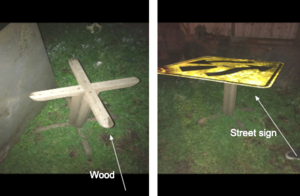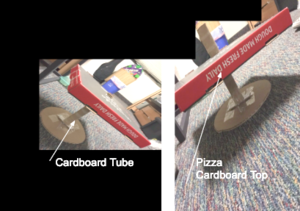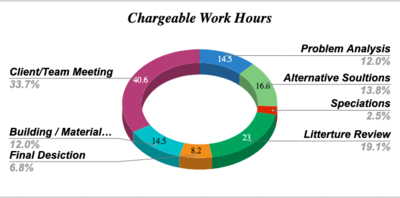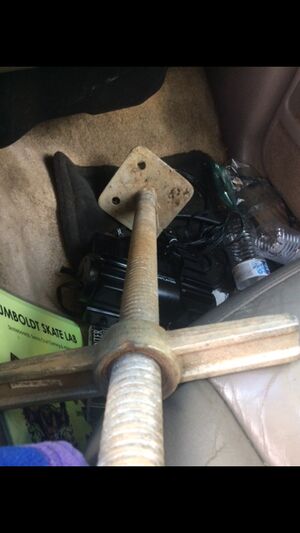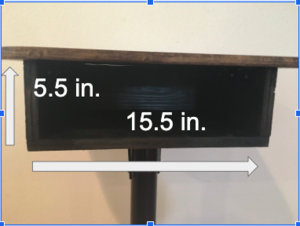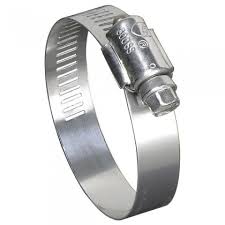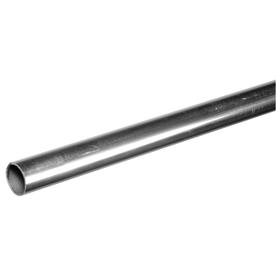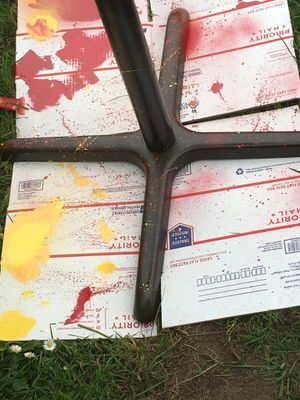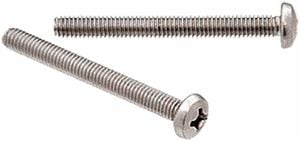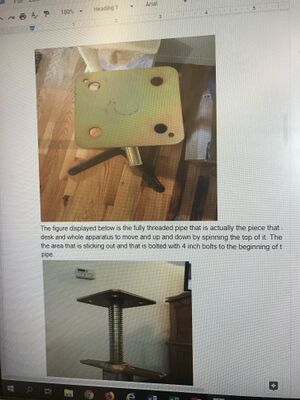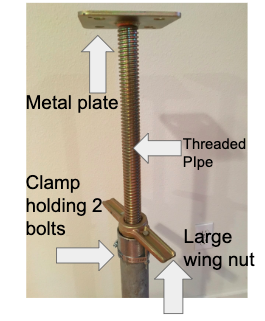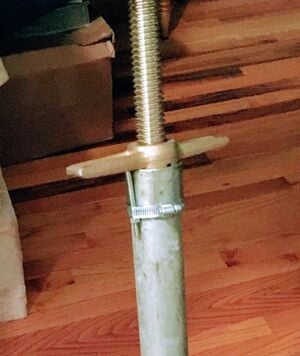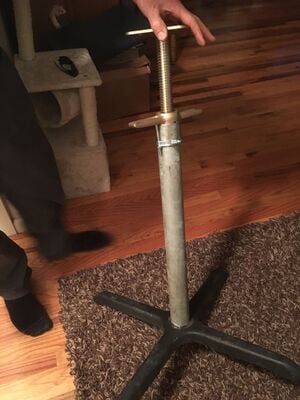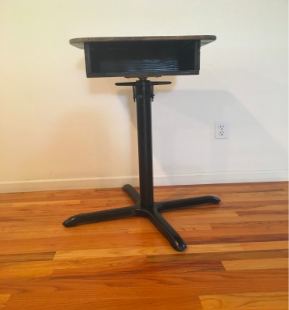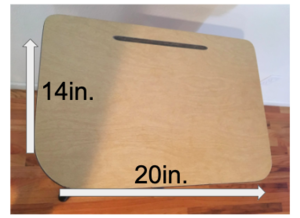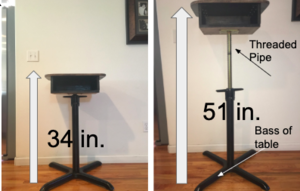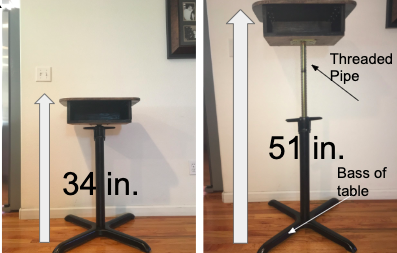
Abstract[edit | edit source]
The purpose of this project is to offer alternative workspace to the typical desk in a middle school classroom. The project is an adjustable standing desk that students of different height may comfortably use to complete group work. The desk was made to accommodate middle school students and function as a collaborative workspace in the classroom. The design takes into account the tendencies of energetic, fidgeting students by providing a distraction-free alternative to students that prefer standing while doing work.
Background[edit | edit source]
This project was commissioned by Zane Middle School in Eureka, CA to be completed for the Spring 2019 Engineering 215 - Introduction to Design at Cal Poly Humboldt. Zane Middle School is a 6th - 8th-grade Magnet School with STEAM focus, dedicated to providing an enhanced learning environment tailored to the needs of middle-level learners. Team C.H.A.I.R. is a group of four engineering students tasked with designing a desk that gives students the option to work in a less restrictive space.
Problem statement and criteria[edit | edit source]
After a full day of learning, students too fidgety, energetic, agitated, etc. to focus while sitting at a standard school desk. The objective of this project is to offer an alternative to typical school desk with the choice to stand during class.
| Criteria | Importance | Constraints |
|---|---|---|
| Safety | 10 | Must bare the weight of students without falling or presenting other safety hazards |
| Utility | 9 | Must function to adjust to different heights |
| Comfort | 8 | Must accommodate students of different sizes and ages |
| Cost | 7 | No more than $400 may be spent |
| Durability | 6 | Must withstand daily use by students that may unscrew loose parts |
| Inspiration | 5 | Inspire students to reuse materials and be creative while building. |
Description of final project[edit | edit source]
Use gallery for descriptions of photos. Our final project is an adjustable desk that goes from 29 to 48 inches high. This size difference allows students of all different heights to be able to use it. By spinning the top of the desk to the right it will lower the size of it and when you spin it to the left it will make the desk be taller. The base of the desk is a four-legged base because it gives it the best stability so it is not unbalanced in any way. The spinning mechanism allows the desk to be raised and lowered with only one person doing it instead of having to have anyone else help them. The table top is the size of an average desk's top which gives the student a good amount of room to work and there is a little pencil indentation on the desk so they will not have to worry about their pencil falling off of the desk. Also, underneath the desk will have a little shelf area where they can store paper, folders, textbook, etc.
Prototyping[edit | edit source]
The first set of prototypes created were built to function as the final design would. This was accomplished by gathering wood scraps and constructing an X shape base. We also attempted to use a circular base to see which would be more sturdy and less likely to tip over. The circler base was more superior but it would require a large amount of space to truly be effective. The X base was sturdy enough and fit our circumstances better in lowing the cost and building time.
Costs[edit | edit source]
| Quantity | Material | Source | Cost ($) | Total ($) |
|---|---|---|---|---|
| 1 | Wood | Craigslist | 15.67 | 15.67 |
| 1 | Cylinder pip | personal | 0.00 | 0.00 |
| 1 | Pipe grips | personal | 0.00 | 0.00 |
| 1 | Threaded pipe | Humboldt Scrap Yard | 27.67 | 27.67 |
| 4 | Furniture felt pads | Ace hardware | 1.79 | 7.19 |
| 4 | 1/2 Washers | Ace Hardware | 0.45 | 1.80 |
| 1 | Sand Paper | Ace Hardware | 0.49 | 0.49 |
| Total Cost | 52.82 | |||
Costs (Hours)[edit | edit source]
The picture below illustrates a pie chart of the total design costs in terms of hours for the design.
Testing Results[edit | edit source]
Desk
After prototyping the table top and playing with different shapes that would best fit the need of the students, we found that a hexagon would be the best shape out of a circle, square, and other like shapes. We wanted to have a circle for the benefit of making it easier to spin 360 degrees multiple times. However, a circle is not the best choice when it comes to using space efficiently. For group work to be more comfortable, a hexagon design was implemented. A hexagon shape as the table top would allow for more group space due to the surface area. It is easy to spin and provides an individual section for anyone around the table to work in. The only issue with the hexagon surface would be the sharp corners, which may be filed down for safety.
Adjustability function
The table is able to move up or down by spinning the table; left to go down and right to raise the table. We also really prioritized on making the desk adjustable but with the criteria of only having an operator in the design. The science behind the adjustability is the threading; threading is a form carving that lowers the friction when going up but still allows for the user to persevering the original friction so the table won't go back down. Doing this minimized the distraction that may occur in the classroom setting especially if the threading is small so it will have more variety in the range that will be available for people to use.
How to build[edit | edit source]
Maintenance[edit | edit source]
The adjustable desk will require minimal maintenance, but over time some pieces may need to be lubed or replaced.
Schedule[edit | edit source]
- Weekly
- Disinfectant wipes for the table tops to ensure cleanliness
- Monthly
- Check all screws and bolts to make sure tight
- Lube as needed to ensure smooth rotation of desktop
- Yearly
- Make sure structural integrity of desk itself is still holding strong
- Every 5 years
- Possible paint job if current paint starts to chip
Instructions[edit | edit source]
Troubleshooting[edit | edit source]
This is how to troubleshoot basic operation. For complex issues contact the custodial staff or the Eureka School District Carpenter shop.
| Problem | Suggestion |
|---|---|
| When turning the table it makes noise | Put some WD40 in the threads |
| Threaded pipe goes all the way off | Two person job, one holds the top part of the table while the other guilds the pipe into the hollow pipe to the be twisted back on |
| If there a wiggle in the table | Tighten the bolts or screws around the pips or table |
Discussion and next steps[edit | edit source]
The alternative desk is being used by anywhere from 1-4 students at a time during a 7 hour school day, 5 days a week, from mid-September to about June. With that being said, the desk is going to be in use most of the time meaning ensuring the stability of the overall design is crucial. The desks main purpose is to allow for a space where students can still do their work without having the discomfort of sitting in a chair. The desk is adjusted by rotating the table-top clockwise or counterclockwise to move the table-top up and down in height depending on the user. The desk can be adjusted by one person minimizing classroom distractions.
Our first step was to create a base that could hold the weight of the table-top itself and be able to adjust freely and easily. These parts were acquired from the Arcata Scrap Yard. The next step was to acquire a tabletop that could mount to the current base and spin freely as well as allowing for enough space for group work. These steps required multiple hours of collaboration and deliberation to come to a consensus of the type of base that would work best with the shape of the table top used. With this product, students now have the opportunity to stand up from their normal and work at the standing desk to give to give them a chance to stand and stretch out during these prolonged periods of time where they usually sit.
Suggestions for future changes[edit | edit source]
This product was designed to allow students that find themselves fidgeting or tapping in their chairs to have more options when it comes to working in class. Whether it be sitting in a traditional desk or standing at an adjustable one. Having an adjustable desk gives the option to work at various heights thus making the work experience more pleasurable/bearable. To further compensate for students that still find themselves fidgeting, additions and simple modifications to the desk can solve these problems. For example, adding rubber band cords or a fidget spinner to the desk could solve these problems if they continue.
References[edit | edit source]
